Looking through my Willie Wagtail images I realised I have shots of them in deserts, gardens, woodlands, around rockpools, at the beach and in paddocks. They are everywhere!
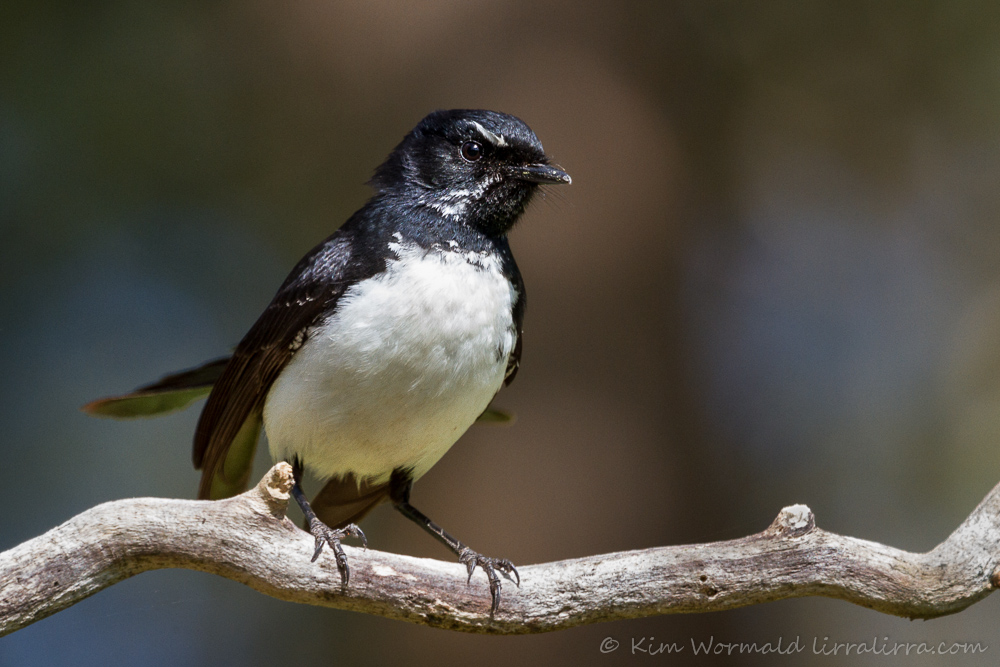
Willie Wagtail
Out of interest I looked them up in the ‘New Atlas of Australian Birds’. In surveys conducted between 1998-2002 Willie Wagtails were the second most commonly recorded species after the Australian Magpie. Wagtails are more widespread over mainland Australia than magpies, but are surprisingly absent from Tasmania.
Willie Wagtails are strongly marked with black plumage on their backs, heads, throats and tails, and bold white eyebrows, whiskers and bellies. Looking at still images of them it’s impossible not to imagine the continual sideways wagging of their tails.
.
Willie Wagtails are often seen in paddocks, sometimes perched on fences or on the backs’ of grazing animals and sometimes foraging on the ground. The image above makes me smile as its neck looks so tiny and its feathery head looks comical.
.
Foraging amongst the rockpools above, and amongst beached seaweed below.
.
.
Willie Wagtails are in the same family as Grey Fantails and Rufous Fantails. They are about 20cm in length with a weight of about 20g. They nest at any time of the year and usually lay three eggs.
.
There’s something cheerful about these noisy little tail waggers. They feature strongly in Aboriginal culture where they are often believed to eavesdrop on conversations and pass on what they hear. ‘Aboriginal Words and Place Names’ by AW Reed lists several words for Willie Wagtail including: tityarokan, mugana, jenning-gherrie, deereeree and gumalkoolin. A name I am more familiar with is tjinjiri tjinjiripa, pronounced almost ‘gingery gingerypa’; I’ve been known to whisper things to Willie Wagtails that I’d like to have spread around!
Happy birding, Kim
Thank you for your visit and comments.
If you’d like to receive a weekly email informing you that lirralirra has been updated please add your email address to the ‘subscribe’ box above right.
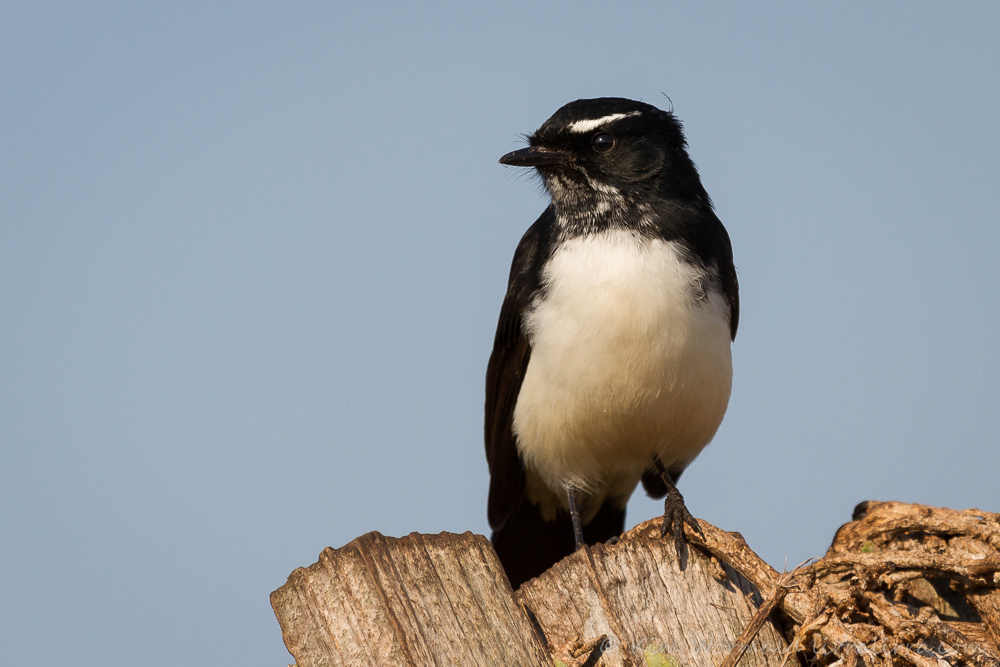
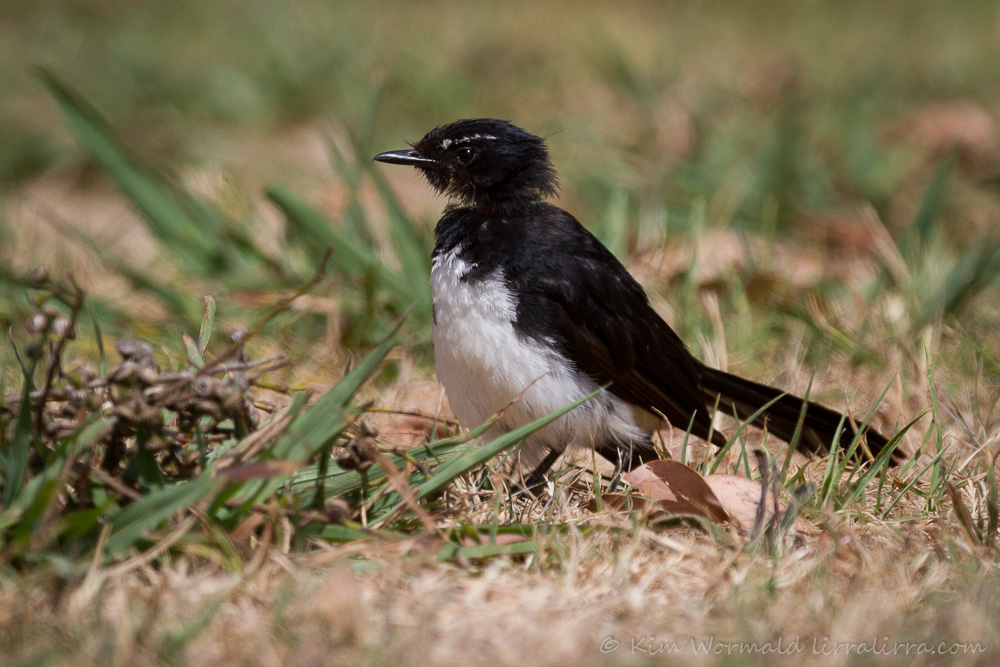
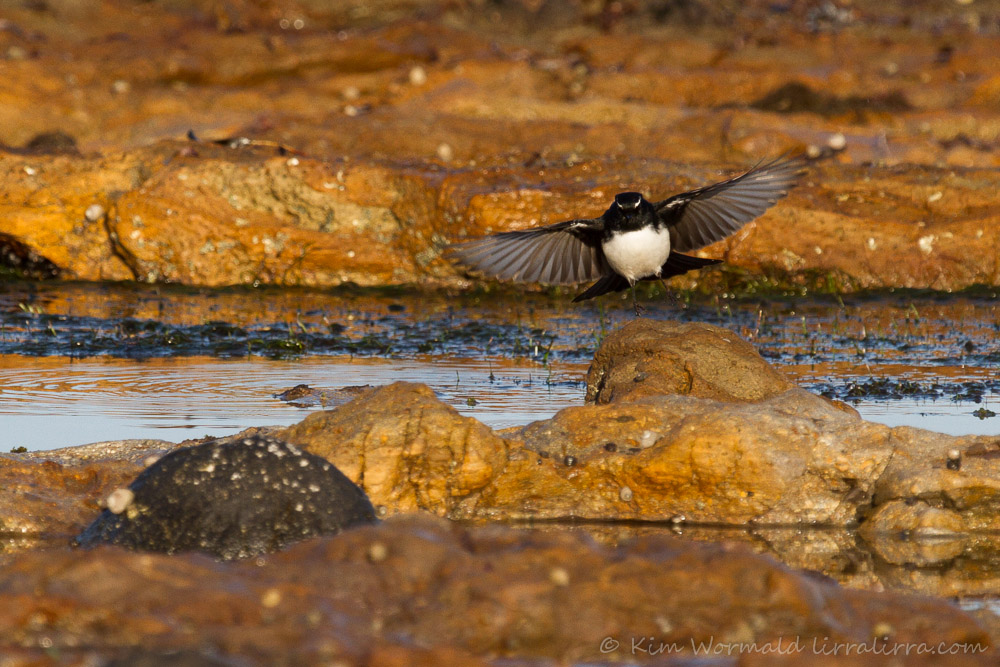
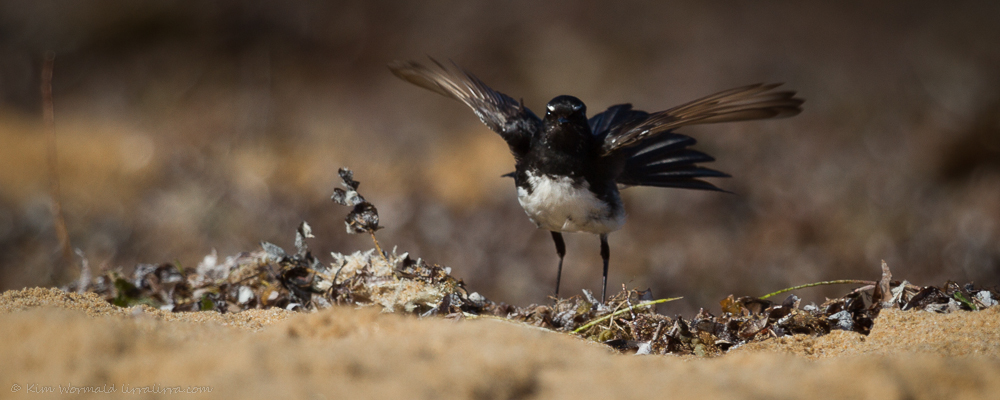
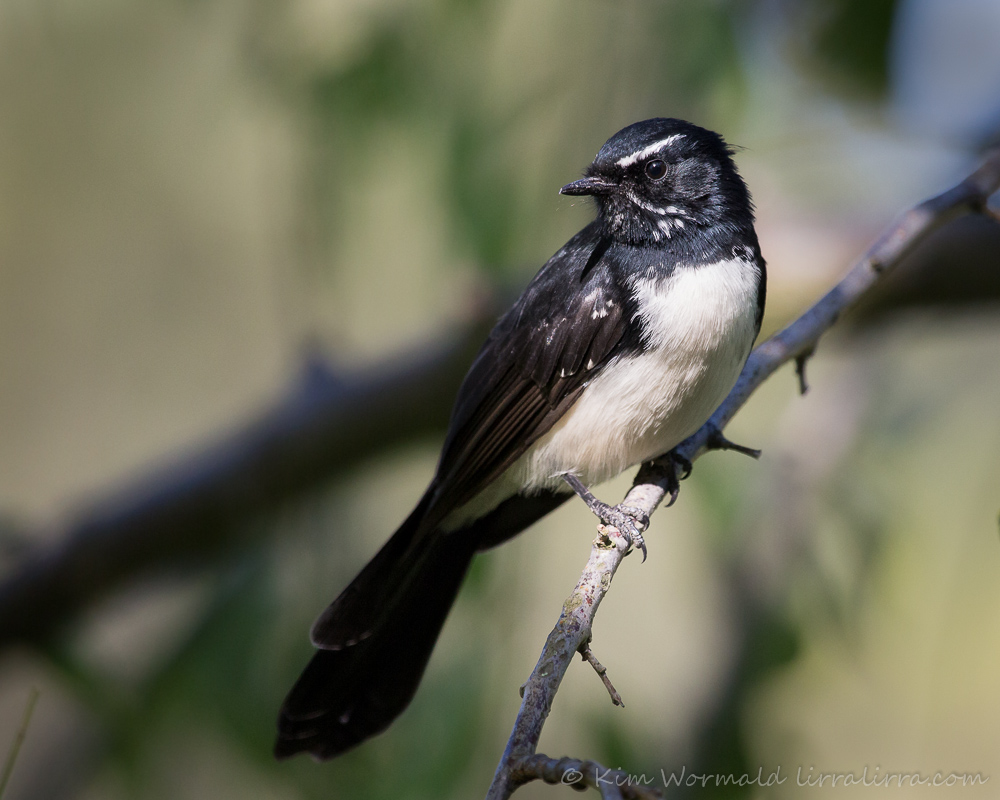

I’ve also known them to be called jidijitch. If you say JIDIjitch JIDIjitch quickly, then it almmost sounds exactly like them :).
That is a perfect name for them, Diane. As you can imagine I’ve been repeating JIDIjitch and totally agree that it sounds just like them!
I didn’t know they weren’t in tassie, how odd! Very interesting!
I thought it was odd too, especially when the map shows them in just about every speck of the mainland.
nice shots, I see hundreds of these out on my courier run, Id like to add that I think they should be recorded as the bravest little bird, Ive seen three of them bashing up a crow at the local park, the poor crow ended up in the pond hounded there by them. Ive also seen a wedgetail eagle flying away from an attacking willy wagtail
That would have been a neat sight Julie, two neat sights! Did you get any images of either event? They are super-brave/silly little birds, there’s much to admire about them.
What a cutie, this last photo of wiggle wagtail’s colour is more a blue black than midnight black, also noticed that the white markings over his eye make him look very intelligent don’t you think?? hugs Dona
Their eyebrows do give them a striking look, I wonder if they are smart. Ravens, crows and parrots are all very intelligent too. Thanks for your comments Dona, much appreciated. Glenn says ‘hello’
Lovely photos Kim, one of my favourite black & white birds.
I’m glad you like the wagtails and the images Carole
Perhaps it is anthromorphism (a crime I often commit) but these Willies look very pugnacious. Small they may be, that I see a ‘don’t mess with me look’ in their eyes.
Here in Canberra we have more magpies than Wilie Wagtails – but I love them both.
It’s hard not to be anthropomorphic with some critters. You’re absolutely right about their look and quite a few people have pointed out how fierce they actually are. I feel another post coming on …
Hi Kim sorry not to have seen your PS from last week until this week re type of Skua. Angus currently on Kimberley coast, lucky him but comms difficult. I will follow up and send any info I get.
Cheers
Alison
Thanks Alison!